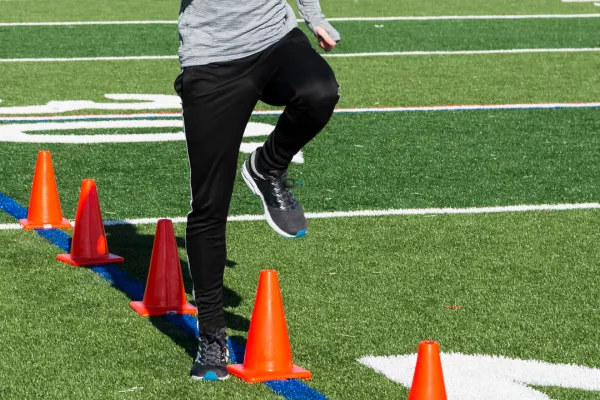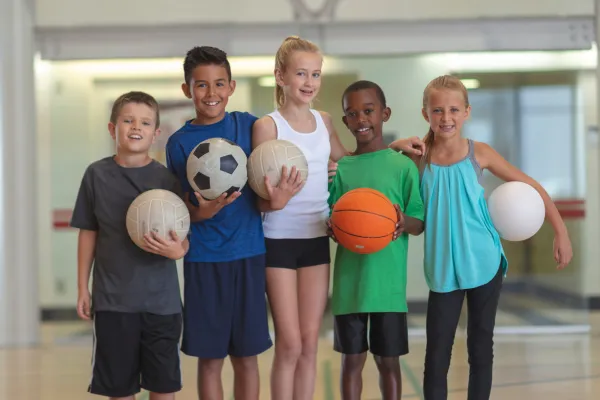
Fitness is a Privilege not a Punishment
Establishing consequences is essential for fostering discipline, accountability, and fairness within a team. However, the way consequences are applied can shape an athlete’s long-term relationship with movement, motivation, and self-confidence. Let’s get one thing straight, fitness is not a punishment, it is the very thing that we want athletes to enjoy, love and appreciate in the game and beyond.
Why Fitness Should Never Be a Consequence
Traditional coaching methods have long used physical exercise—extra sprints, push-ups, or laps—as a consequence for mistakes or rule violations. While this approach may create immediate compliance, research suggests it has harmful psychological and behavioral effects.
One of the biggest issues with using fitness as punishment is that it negatively conditions an athlete’s perception of movement. According to self-determination theory (Deci & Ryan, 2000), intrinsic motivation—the desire to engage in an activity for personal satisfaction—plays a crucial role in long-term engagement in sports and physical activity. When exercise is framed as a negative consequence, athletes begin associating movement with discomfort, rather than seeing it as a tool for growth, enjoyment, and skill development. Over time, this can contribute to burnout, disengagement, and even avoidance of physical activity beyond organized sports (Visek et al., 2015).
Using exercise as punishment also creates a fear-based environment. Research on motivation and learning (Dweck & Leggett, 1988) shows that fear-based approaches can lead to a fixed mindset, where athletes become overly cautious, afraid of failure, and less likely to take risks that promote skill growth. If an athlete fears extra running for making a mistake, they may hesitate to make aggressive plays, reducing their ability to learn from errors and adapt under pressure.
Moreover, fitness-based punishment does not address the root cause of behavioral issues. Effective consequences should directly connect to the behavior being corrected. If an athlete is disrespectful, unfocused, or lacks effort, physical punishment does nothing to teach accountability, reflection, or personal responsibility (Gershoff, 2013). Instead, consequences should be designed to create learning experiences that reinforce positive team values.
Best Practices for Effective Consequences
For consequences to be meaningful, they should be clear, appropriate, and directly linked to the athlete’s behavior. Below are age-appropriate, research-backed strategies for discipline that promote self-awareness, accountability, and team cohesion. Here are just a few examples to get you started:
Ages 6-9: Teaching Accountability Through Simple Reflection
Young athletes are still developing impulse control and understanding the impact of their actions (Diamond, 2013). Consequences for this age group should be immediate, simple, and tied to reflection:
Time-Outs with Reflection – Rather than having a child run for misbehavior, a short time-out followed by a simple question, such as “What do you need to do before rejoining the team?”, encourages self-regulation.
Loss of a Privilege – If an athlete repeatedly disrupts a drill, they may lose the opportunity to lead warm-ups or select a fun activity at the end of practice.
Natural Consequences – If a player refuses to share equipment or take turns, they may need to sit out until they are ready to work with teammates.
Ages 10-13: Encouraging Ownership and Accountability
Athletes in this age group begin to understand cause and effect more deeply and can engage in structured reflection (Eccles & Wigfield, 2002). Consequences should reinforce responsibility while allowing for self-correction.
Accountability Assignments – If an athlete is disrespectful to a teammate, they may be required to write down three ways they can contribute positively to team culture and share it with the team.
Increased Responsibility – If an athlete consistently forgets their gear, they may be responsible for setting up and collecting team equipment for a week.
Restorative Conversations – If an athlete displays poor sportsmanship, they must apologize and verbalize one thing they will do differently next time.
Ages 14+: Developing Leadership and Self-Discipline
Older athletes have a greater capacity for self-awareness and should be encouraged to take leadership in correcting behavior. Consequences should prepare them for accountability beyond sports.
Privilege Reduction – If a player lacks effort in practice, they may lose a leadership role or playing time, such as serving as team captain for the next game or starting the next game.
Natural Consequences – If an athlete is habitually late, they may sit out of the first drill or be required to create a plan for being on time.
Community-Based Accountability – If a player violates a key team value, they may be asked to lead a discussion on why that value is essential to team culture.
Reframing Fitness in a Positive Way
Instead of using fitness as a punishment, coaches should position movement as an opportunity for growth, skill enhancement, and preparation. This aligns with research on autonomy-supportive coaching (Mageau & Vallerand, 2003), which shows that when athletes feel a sense of choice and purpose in training, they develop a deeper commitment to sport.
Use Conditioning as a Reward – High-energy, competitive challenges—such as relay races or fun speed drills—can be used as incentives for effort and focus.
Frame Fitness as Preparation – Explain to athletes how strength and endurance allow them to perform at a higher level, rather than positioning conditioning as a reaction to mistakes.
Promote Fitness as a Team-Building Tool – Engaging in fitness challenges together fosters camaraderie rather than instilling fear of punishment.
Shifting away from fitness-based punishment and toward accountability-driven discipline creates an environment where athletes feel supported, empowered, and motivated. By using consequences that reinforce reflection, responsibility, and team values, coaches can develop athletes who not only excel in sport but also carry essential life skills beyond the game.
Read more blogs like this from Coach Julie:
A Cornerstone of Effective Coaching: Mastering EQ
The Mental Agility Ability: A Game Of Adjustments in Coaching
Flipping the Switch-How Great Coaches Show Up When It Matters
An Unwritten Rule of Coaching Athletes
Your Daughter Is Going Pro pro…probably not.
Understanding Learning Styles of Female Athletes: Amplifying Performance Through Tailored Coaching
Coaching Female Athletes-The Art & The Science
What Every Coach Needs to Know About the Female Athlete’s Hormonal Cycle
If you enjoyed this article and know other coaches and trainers who could benefit from the content in this blog, please share in your social media channels.
About the Author:
Julie is an Author, CEO and Coach. She is the Brand Executive at the IYCA, the President & Founder of the Non-Profit Beyond The Game Alliance where they offer a full suite of workshops and support for teams, coaches and parents. In addition to her work as a business consultant and coach of coaches, leaders and entrepreneurs.
Julie is a Speed Development Specialist and Inner-Game Coach at the college, high school and youth levels.
Visit Julie’s Author Page

References:
Deci, E. L., & Ryan, R. M. (2000). The “what” and “why” of goal pursuits: Human needs and the self-determination of behavior. Psychological Inquiry, 11(4), 227-268.
Diamond, A. (2013). Executive functions. Annual Review of Psychology, 64, 135-168.
Dweck, C. S., & Leggett, E. L. (1988). A social-cognitive approach to motivation and personality. Psychological Review, 95(2), 256-273.
Eccles, J. S., & Wigfield, A. (2002). Motivational beliefs, values, and goals. Annual Review of Psychology, 53, 109-132.
Gershoff, E. T. (2013). Spanking and child development: We know enough now to stop hitting our children. Child Development Perspectives, 7(3), 133-137.
Mageau, G. A., & Vallerand, R. J. (2003). The coach–athlete relationship: A motivational model. Journal of Sports Sciences, 21(11), 883-904.
Visek, A. J., Achrati, S. M., Manning, H., McDonnell, K., Harris, B., & DiPietro, L. (2015). The fun integration theory: Towards sustaining children and adolescents sport participation. Journal of Physical Activity and Health, 12(3), 424-433.








